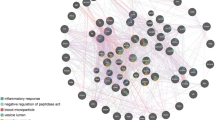Abstract
Saliva is now an established biofluid with a number of important applications in use across research and clinical settings. Saliva contains an assortment of biomolecules, including proteins, metabolites, RNA, DNA, and microorganisms. Numerous biomolecules enter saliva from the blood by passing through the intercellular spaces, reflecting the physiological state of the body. Saliva can be collected directly or using one of the numerous devices/systems that are available, each of which has its own specific applications. The identification and classification of salivary biomolecules, using increasing advanced omics approaches, have contributed to the reality that saliva is a creditable diagnostic fluid for oral and systemic diseases.
Access this chapter
Tax calculation will be finalised at checkout
Purchases are for personal use only
Similar content being viewed by others
References
Patel A, Patel S, Patel P, Tanavde V (2022) Saliva based liquid biopsies in head and neck cancer: how far are we from the clinic? Front Oncol 12:828434
Lee YH, Wong DT (2009) Saliva: an emerging biofluid for early detection of diseases. Am J Dent 22:241–248
Llena-Puy C (2006) The role of saliva in maintaining oral health and as an aid to diagnosis. Med Oral Patol Oral Cir Bucal 11:E449–E455
Chundru VNS, Nirmal RM, Srikanth B, Bojji M, Midhun N, Lakshmi BJ (2021) Salivaomics for oral cancer detection: an insight. J Pharm Bioallied Sci 13(Suppl 1):S52–S56
Bostanci N, Selevsek N, Wolski W, Grossmann J, Bao K, Wahlander A, Trachsel C, Schlapbach R, Öztürk V, Afacan B, Emingil G, Belibasakis GN (2018) Targeted proteomics guided by label-free quantitative proteome analysis in saliva reveal transition signatures from health to periodontal disease. Mol Cell Proteomics 17:1392–1409
Figura M, Friedman A (2020) In search of Parkinson's disease biomarkers - is the answer in our mouths? A systematic review of the literature on salivary biomarkers of Parkinson's disease. Neurol Neurochir Pol 54:14–20
Golatowski C, Salazar MG, Dhople VM, Hammer E, Kocher T, Jehmlich N, Völker U (2013) Comparative evaluation of saliva collection methods for proteome analysis. Clin Chim Acta 419:42–46
Henson BS, Wong DT (2010) Collection, storage, and processing of saliva samples for downstream molecular applications. Methods Mol Biol 666:21–30
Pappa E, Kousvelari E, Vastardis H (2019) Saliva in the "Omics" era: a promising tool in paediatrics. Oral Dis 25:16–25
Lee JM, Garon E, Wong DT (2009) Salivary diagnostics. Orthod Craniofac Res 12:206–211
Walz A, Stühler K, Wattenberg A, Hawranke E, Meyer HE, Schmalz G, Blüggel M, Ruhl S (2006) Proteome analysis of glandular parotid and submandibular-sublingual saliva in comparison to whole human saliva by two-dimensional gel electrophoresis. Proteomics 6:1631–1639
Hiremath G, Olive A, Shah S, Davis CM, Shulman RJ, Devaraj S (2015) Comparing methods to collect saliva from children to analyze cytokines related to allergic inflammation. Ann Allergy Asthma Immunol 114:63–64
Zimmermann BG, Park NJ, Wong DT (2007) Genomic targets in saliva. Ann N Y Acad Sci 1098:184–191
Khurshid Z, Zohaib S, Najeeb S, Zafar MS, Slowey PD, Almas K (2016) Human saliva collection devices for proteomics: an update. Int J Mol Sci 17:846
Malamud D (2011) Saliva as a diagnostic fluid. Dent Clin N Am 55:159–178
Dowling P, Wormald R, Meleady P, Henry M, Curran A, Clynes M (2008) Analysis of the saliva proteome from patients with head and neck squamous cell carcinoma reveals differences in abundance levels of proteins associated with tumour progression and metastasis. J Proteome 71:168–175
Bradford MM (1976) A rapid and sensitive method for the quantitation of microgram quantities of protein utilizing the principle of protein-dye binding. Anal Biochem 72:248–254
Author information
Authors and Affiliations
Corresponding author
Editor information
Editors and Affiliations
Rights and permissions
Copyright information
© 2023 The Author(s), under exclusive license to Springer Science+Business Media, LLC, part of Springer Nature
About this protocol
Cite this protocol
Dowling, P., O’Sullivan, E.M. (2023). Analysis of the Saliva Proteome Using 2D-DIGE. In: Ohlendieck, K. (eds) Difference Gel Electrophoresis. Methods in Molecular Biology, vol 2596. Humana, New York, NY. https://doi.org/10.1007/978-1-0716-2831-7_13
Download citation
DOI: https://doi.org/10.1007/978-1-0716-2831-7_13
Published:
Publisher Name: Humana, New York, NY
Print ISBN: 978-1-0716-2830-0
Online ISBN: 978-1-0716-2831-7
eBook Packages: Springer Protocols




